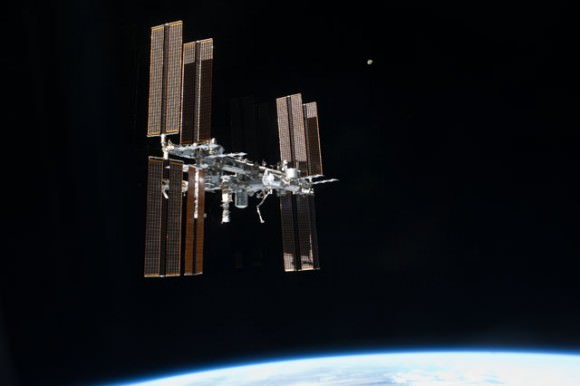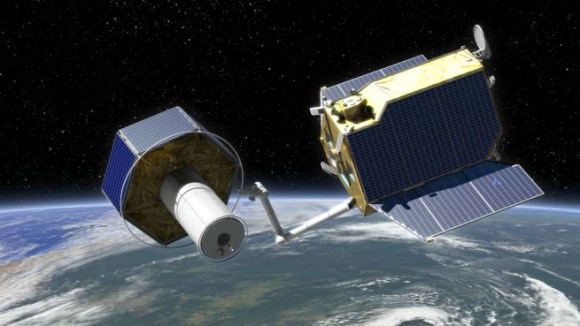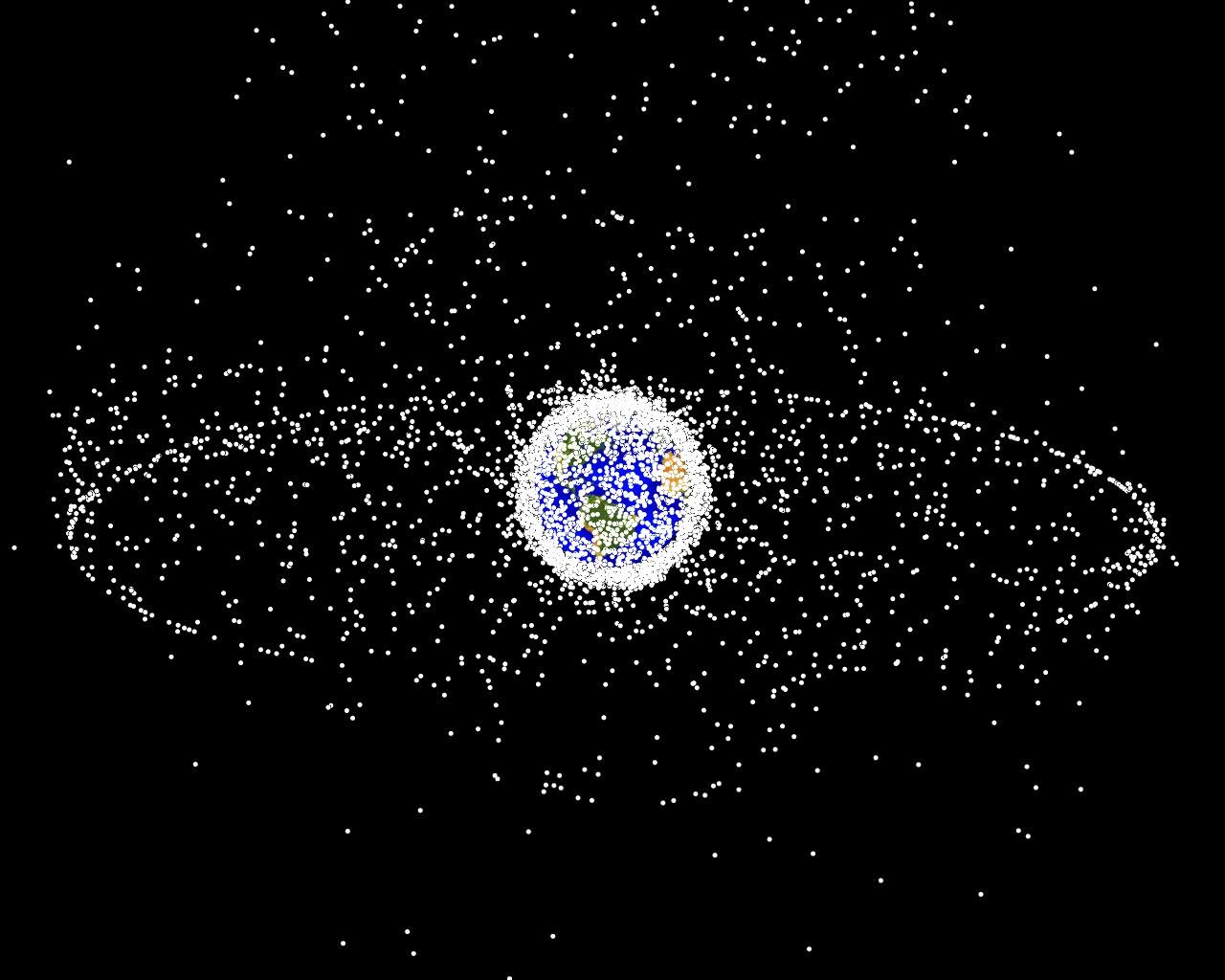Action is needed soon to remove the largest pieces of space debris from orbit before the amount of junk destroys massive amounts of critical space infrastructure, according to a panel at the Sixth European Conference on Space Debris.
“Whatever we are going to do, whatever we have to do, is an expensive solution,” said Heiner Klinkrad, head of the European Space Agency space debris office, in a panel this week that was broadcast on ESA’s website.
“We have to compare the costs to solving the problem in an early stage as opposed to losing the infrastructure in orbit in the not-too-distant future.”
The panel estimated that there is $1.3 billion (1 billion Euros) worth of space satellite infrastructure that must be protected. The 200 most crucial satellites identified by the space community have an insured value of $169.5 million (130 million Euros), Klinkrad added.
Critical infrastructure, though not specified exactly by the panel, can include communication satellites and military eyes in the sky. Also at risk is that largest of human outposts in space — the International Space Station.

The conference concluded that without further action — even without launching any new rockets — it’s quite possible there could be a runaway effect of collisions producing debris within a few decades. Even a tiny object could act like a hand grenade in orbit if it smashes into a satellite, Klinkrad said.
A recent example of the problem: a piece of Chinese space debris smashed into a Russian satellite in March. It didn’t destroy the satellite, but altered its orbit.
To mitigate the situation, representatives suggested removing 5 to 10 large pieces of debris every year. They added they are uncertain about how soon a large problem would occur, but noted that the number of small objects is definitively increasing annually according to measurements done by the Walter Baade 6.5-meter Magellan Telescope.
“[It’s] something we haven’t know until now. We have been suspecting it is the case … this is a new result which is very important.”
While highlighting the risk, the European representatives of the panel added they are not standing idly by. Already, there are regulatory changes that could slow the problem for future launches — although there still will be cleanup to do from five past decades of space exploration.

A few of the points brought up:
– German officials are working on an in-orbit satellite servicing solution called DEOS. “The DEOS project will for the first time demonstrate technologies for the controlled in-orbit disposal of a defective satellite,” Astrium, the prime contractor for the definition phase, wrote in a press release in 2012. “In addition, DEOS will practice how to complete maintenance tasks – refuelling in particular – that extend the service life of satellites.”
– France’s Parliament passed the Space Operations Act in December 2010. “Its chief objective is to ensure that the technical risks associated with space activities are properly mitigated, without compromising private contractors’ competitiveness,” French space agency CNES wrote on its website. “The government provides a financial guarantee to compensate damages to people, property or the environment.”
– A United Nations subcommittee of the Committee on the Peaceful Uses of Outer Space is working on space sustainability guidelines that will include space debris and space operations practices. More details should be released in June, although Claudio Portelli (a representative from Italy’s space agency) warned he did not expect any debris removal proposals to emerge from this work.
For more technical details on the space debris problem, check out the webcast of the ESA space debris conference.


I wonder if it would be possible to send a large helium balloon into space with some kind of basket, and with a remote controlled robot to collect the debris into balloon’s basket, and then return to earth for recycling..
As you go higher, the helium becomes less buoyant. (It works by displacing more dense air.) Helium can’t take you to space. Any debris as low as the balloon altitude range would be burning up because anything in orbit is going tens of thousands of kilometers per hour. Which is also the reason it’s difficult to return anything to the ground.
Even though I work w/Sats/Sat-Coms w/CME/X-ray protection/shields etc.. .I never really thought of using a method to return them when they become obsolete. Any Sats in space that is obsolete does need a concept/way to clear them from orbit. It is a form of garbage,…period. What would you suggest it be done? I am lost on the ‘how-to do-it’ concept(s). …take care.
for LEO, how about sticking solar sails to them?
Good for you. Good input. That sounds like a plan. But where would we send ’em’? Towards the Oort Cloud area & beyond? ;-)…
OK how about several Falcon HTV-2 or similar crafts to catch the debris, using some kind of reinforced spider silk net, or maybe kind of collection container?
Going with a balloon to the edge of space is not going to give you the required speed to orbit above the atmosphere which is 28,800 km/h You still need a big rocket to accelerate to that speed.
ok.
Exactly. It’s like climbing up a slippery slope – you can get up as far as you want, but without enough force to continue working against the lack of friction, you’re going back down. Using the atmosphere to get up there is like having a kitchen stepstool in a 20 foot deep hole. You’re closer to the top, but you’re not there.
umm, ok
With all that insurance money at stake, what are the chances the insurance companies would start lobbying or funding something?
With all respect that is a bit like saying “with all the increase in crime ,insurance companies should pay to increase security on people’s homes”. What is more likely is the insurance companies will start increasing premiums, increasing excesses and in the worst case pull out of the game altogether making it extremely difficult to source insurance or force companies to self insure.
They won’t do that… they’ll just increase premiums like they always do.
Yes . Ask the Mafia . They were good a garbage collection . Maybe they would like to fund the cleanup project.
Well it was worth a thought.
Yeah, but the space + satellite market is growing and insurance being a major cost, they can sell to more customers if rates are lower.
They’re probably too lazy, though.
No. The rates will be set by market forces – so they are not interested in getting more customers through selling “cheap” insurance, they’ll get more customers only by ensuring their rates are lower than their competitors. That’s all. Nobody is going to put a satellite up without insurance – and they’ll charge the maximum they can that the market will support.
One thing they will not be interested in is in helping to mitigate client losses by spending money on a clean-up operation. The more crowded LEO is, the better for them, as collision becomes a higher risk factor. This gives all the insurance companies the excuse they need to bump up premiums further.
Insurance companies don’t give a rats backside about stimulating growth of the space market. If that market collapses, they’ll just move onto something else.
Really?! A whole BILLION? For all the current infrastructure?
I think your numbers are off by one or two orders of magnitude. Please double check. And a single launch of a single satellite would be insured for more than $169 million.
Once you put something that wrong in an article, every other statement in the article becomes suspect.
Thanks
Reminds me of Dr Evil being unfrozen and demanding a whole one million dollars. Really people it isn’t that difficult. One billion is only 1,000 million. Stop being afraid of 10 to the power of three.
Yes, agreed. But 1B$’s for what they want to do? I am not too keen w/this subject, but it seems a bit much. …take care.
It’s not for what they want to do. That 1B$ represents the all the satellites + the ISS.
$160 billion would be closer to the value of the functional kit up there.
Oh ok..thanks. Never really gave it too much thought….take care.
That is a lot of $. Why so much?…PEACE!
Is Aerogel an appropriate technology for this? It was wildly successful in the stardust mission.
Anyone have any suggestions on how to rid obsolete Sats from orbit, …safely? I’m all ears..PEACE!
Humans: The only animal who defacates in its own house…and beyond!
Objects in low orbit are affected by atmosphere drag, and will eventually spiral down and burn up.
If you could accurately track small objects, you might be able to zap them with a laser from in front, so that radiation pressure causes them to spiral in faster.
Mostly American, and space.com is silent. Biggest island that isn’t an island.
No sh*t Sherlock! Since my presentation in 4th grade, 25 years ago, I have known that this is a prominent problem in the future of space exploration (Near Earth or Further). When we will put our priorities in order, we will see this problem erase. Before this, it’s only blabla and more blablabla!
This is a daunting task and has been discussed off and on but no real solutions have materialized, only pipedreams. The problem continues to just gets worse.
Insurance companies do give discounts to customers who mitigate their own risks. So that could apply to a self-deorbiting capability. But my impression is that most satellites put up these days already have a ticket back down.
The problem is that cleanup doesn’t look like a community effort. Someone has to put up the cash and effort to develop and deploy a garbage collector.
And insurance is already a major cost of putting something up, although collision isn’t yet a main risk. They can ensure the health of the market by keeping the cost of insurance down. But, as a rule the insurance biz isn’t so productive, erm proactive.
The main motivation would be the liability they have on everything already in orbit. A cascade would require the insurers to pay for essentially every satellite to be replaced, whether or not replacement is feasible in the resulting polluted environment.